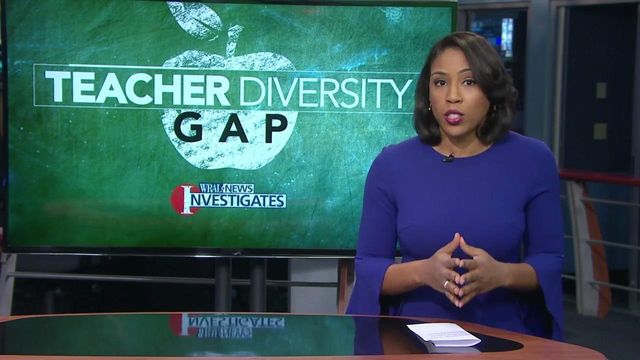NC public schools 'having real trouble finding elementary teachers'
North Carolina public school teachers are not leaving their jobs in droves, but when they do leave, elementary schools are struggling the most to fill the empty teaching positions, according to a report shared with the State Board of Education on Wednesday.
"There’s no evidence that teachers are fleeing the profession. The outgoing percentage is very, very stable, and it's not high. You would expect this in any industry," said Tom Tomberlin, director of educator recruitment and support for the state Department of Public Instruction. However, "we're having real trouble finding elementary teachers," he said, adding that school systems are "finding it's becoming increasingly problematic."
Besides elementary teachers who teach core subjects, schools are also struggling to find elementary teachers to help students with disabilities and middle school math teachers.
Tomberlin presented a draft of the annual "State of the Teaching Profession Report" to the board and noted that the teacher loss rate in North Carolina fell roughly half of a percentage point during the 2017-18 school year. The rate was 8.1 percent in 2017-18, down from 8.7 percent the year before. However, the state needs to focus more on the teacher pipeline, he said.
"The focus has to be on the front end. How do we increase the pipeline to make sure constant outflow doesn’t make us upside down? The focus has to be on the input, because the output is stable," Tomberlin said.
Commonly known as the annual teacher turnover report, it shows how many North Carolina educators leave their jobs and the more than 20 reasons why. The report underwent several major changes in recent years, including the addition of teacher effectiveness data, recruitment data showing which school systems attract the most local teachers and a new method to calculate teacher loss.
The term "teacher turnover" was replaced with new words – "attrition," which tracks the loss of teachers at the state or school district level, and "mobility," which shows where teachers are moving within the state. In previous years, the state's turnover rate included teachers who transferred to other school systems or charter schools in the state or were promoted to principal or other non-teaching school positions.
The report details 23 reasons why teachers leave their jobs, such as "dissatisfied with teaching," "resigned to teach in another state," "retired with full benefits" and "deceased." Tomberlin said the data may be skewed because teachers must tell their schools why they are leaving. If the teachers could report their reasons anonymously to the state, that might produce better data, Tomberlin said.
"I'm very sensitive to the fact that you may not want to burn any bridges," he said. "Honest feedback may be hard for some teachers to do. If we could collect the data at the state, that would be great. I just don’t know how we enforce it or make sure people are responding."
In 2016, WRAL News examined the state's data on teacher loss and found that, in the previous three years, nearly 2,000 teachers reported leaving their jobs for "other reasons." That represented nearly 5 percent of all teachers who left in that timeframe.
In more than 700 of those cases, additional comments were submitted to the state to explain why the teachers were leaving, giving more insight into their decisions. Some complained about low pay, excessive testing and overwhelming workloads. Others said they wanted to spend more time with family, start a new career or teach overseas.
The latest teacher loss report is more than 40 pages long and includes the following highlights:
- Beginning teachers – those with less than three years of experience – left at a much greater rate than experienced teachers – 12.34 percent to 7.25 percent.
- Most of the teachers who left – 54 percent – said they did so for personal reasons that included family moves, changing careers or taking a teaching job in another state. According to the report, just 1.6 percent of teachers left the field because they were “dissatisfied with teaching.”
- The attrition rate only includes teachers who left the field or left the state. Teachers who take a job in a different North Carolina school district are tallied in a figure the report calls “teacher mobility.” However, within each district, a teacher leaving is a teacher leaving whether she or he goes to another district or another state. So the average effect on districts when attrition and mobility are combined is 12.45 percent, the report says.
The state board will vote on whether to make the report final at its meeting Thursday in Raleigh.















